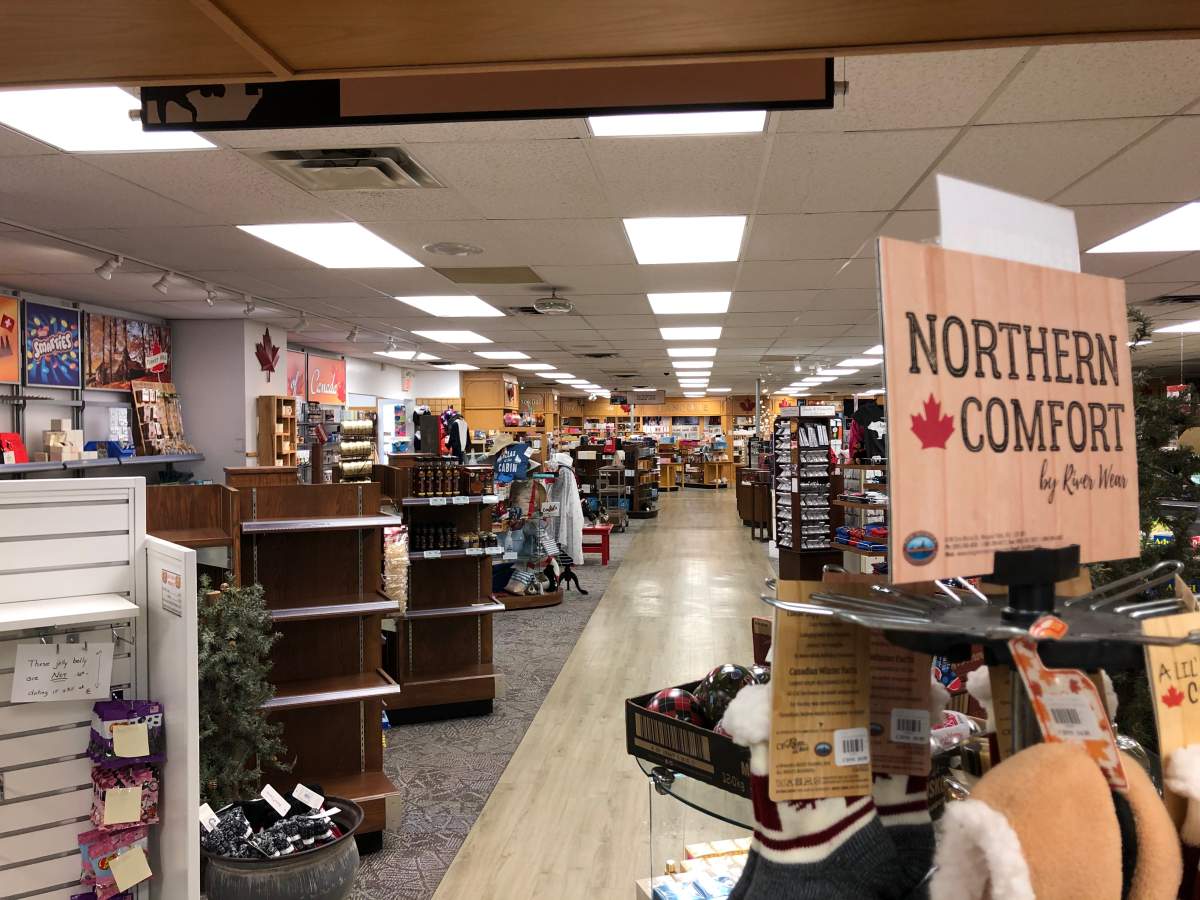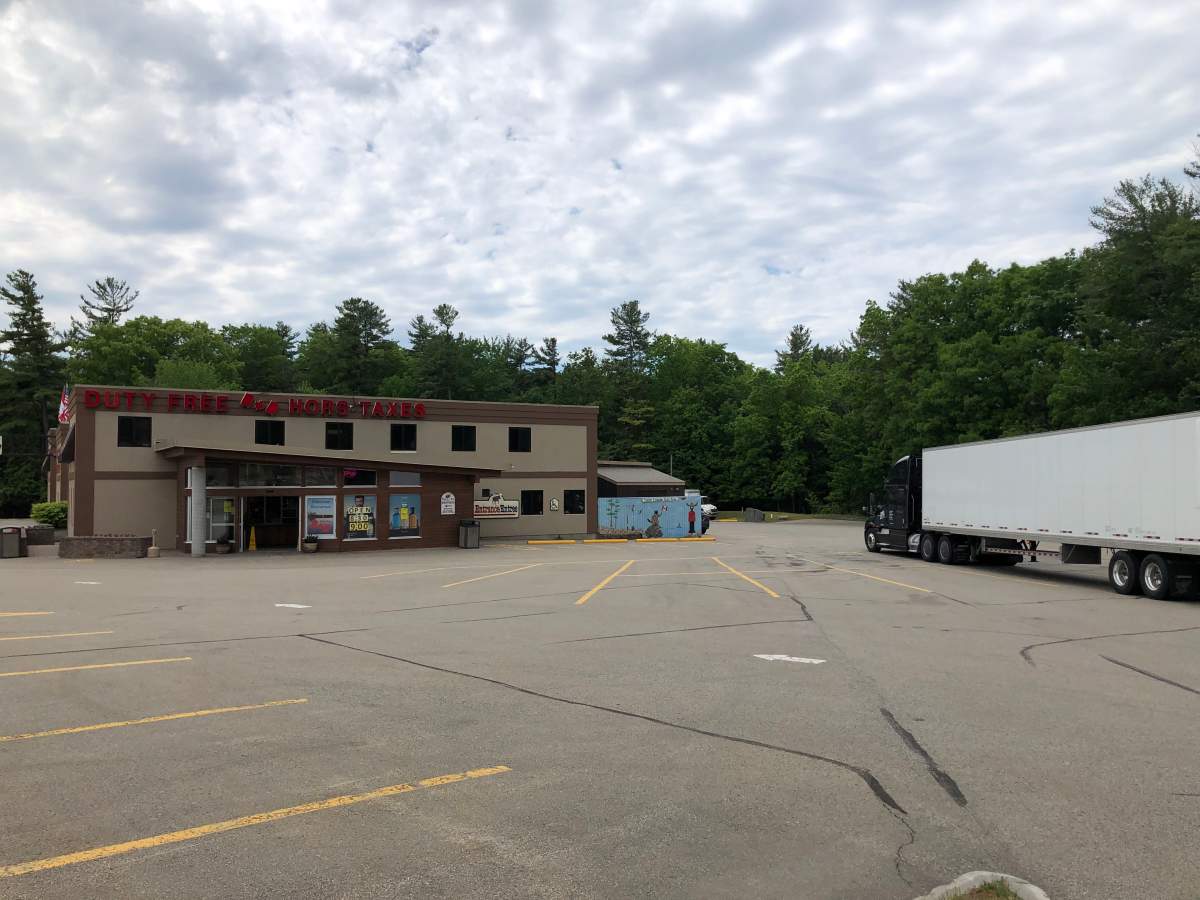It’s been nearly 15 months since Chris Foster has seen a customer.

Foster manages the Queenston-Lewiston Duty Free store just north of Niagara Falls and when the Canada U.S. land border closed due to the COVID-19 pandemic last March, so did the shop.
“The longest closure up until now was 9/11, and that was a day and a half. So as you can imagine, it pales in comparison to the 15 months that we’ve been going through,” said Foster in an interview.
Unlike other retail businesses, duty-free stores can’t pivot in the pandemic to online sales or curbside pickup. Duty-free products must be exported after purchase, so once they leave the store they must leave the country.
Foster goes to check on his spacious store regularly and to check the expiry dates of items he never thought he would have to throw out. Two pallets of chocolate bars and candy sit in his basement storeroom waiting to be destroyed under the supervision of Canada Border Services Agency officials.
“All of this will end up in a dumpster in the very near future. It represents about a quarter of what we would normally have on our shelves upstairs,” Foster said.
Canada’s 33 duty-free shops along the U.S. land border are family-owned or operated. They operate in seven provinces, from New Brunswick to British Columbia. The association representing them says those stores represent approximately $35 million per year in federal, provincial, and local taxes and its president is calling on the government for help.
“We understood it’s a health measure, but now we’re at the point where the border needs to be open and it needs to be open in an uncomplicated way so we can get tourism rolling again,” said Barbara Barrett, executive director of the Frontier Duty Free Association.

Barrett notes that some duty-free stores have remained open as a service to essential workers like truck drivers who still need a place to stop on their way over the border. Barrett would prefer that the border reopen tomorrow to all non-essential travel, but in the meantime, she’s asking the federal government for targeted aide.

Get breaking National news
“The relief measures that the government has come up with have been helpful to an extent, but they’re helpful for businesses that are down 20, 30 per cent. We’re down 95 to 100 per cent. So we need a funding package that’s going to help us survive,” Barrett said.
Federal officials say the new Canada Recovery Hiring program could provide additional subsidies for those suffering businesses. A spokesperson for Chrystia Freeland, deputy prime minister and minister of finance, added there continues to be targeted support, like the wage subsidy and rent subsidy to help hard-hit businesses.
“These essential COVID-19 support measures are being extended until September 2021, and build on the $1 billion committed in this year’s budget to help the tourism industry recover in Canada,” said Katherine Cuplinskas in a statement.
Jeff Butler has been using the wage subsidy to help keep his staff employed but it’s still not enough as his duty-free store is one of the few that has remained open during the pandemic.
“It’s certainly not covering expenses. Even with the wage subsidy, we’re losing tens of thousand dollars a month that we as a family have had to put back in personally to keep the business going,” said Butler in an interview with Global News in his store at the Thousand Island’s border crossing.
His store has managed to stay open thanks to an overnight service window he installed 20 years ago but that had been barely used until last March. However, he’s limited in what he can sell because anything that leaves his store has to leave the country.
“We’re down over 92 per cent in total sales. Our leading category normally would be liquor and beverage alcohol sales. They’re down over 98 per cent,” Butler said.
U.S. laws prevent truck drivers from importing alcohol in their truck unless it’s part of the manifest load, so drivers who use it as a pit stop can’t even take advantage of the deep discounts.
As a result, Butler says they’ve already had to destroy approximately 3,000 cans of beer that expired and there are a number of bottles of cream-based liquors already marked for disposal when they hit their expiration dates in the coming months.
“Our only option is, destroy it under custom supervision. So we literally have had to pour out thousands of cans of beer and, you know, lots and lots of bottles of liquor with more to come,” Butler said.
Beyond the additional federal financial aid, duty-free store owners are asking the Canadian government to publish a plan for how the border might be reopened, which many believe will be a phased-in approach.
“We just want to see some metrics put in place and a plan put out that gives us a bit of a guidance as to when we think we might be back open,” Butler said.
The current closure of the Canada U.S. border to non-essential travel expires on June 21 but could be extended again, according to government officials.
Yet there is an acknowledgment by the government that the COVID-19 situation is improving in both Canada and the U.S.
“As vaccination rates have increased, those conditions have begun to improve. This has opened the door to the possibility of an easing or refinement of border measures, aligned with the best advice of public health experts,” said James Cudmore, director of communications to Bill Blair, the minister of public safety and emergency preparedness.












Comments